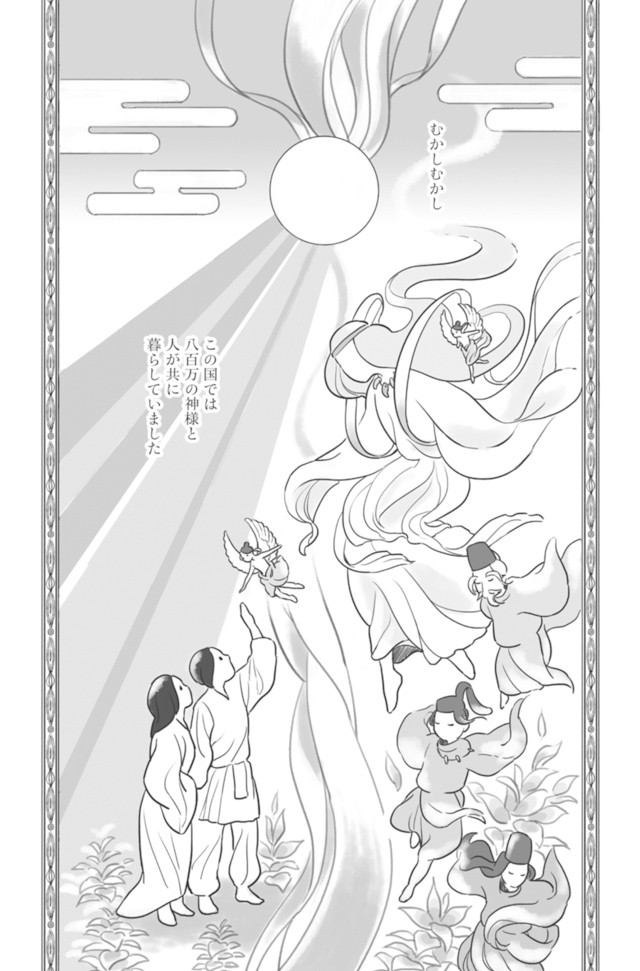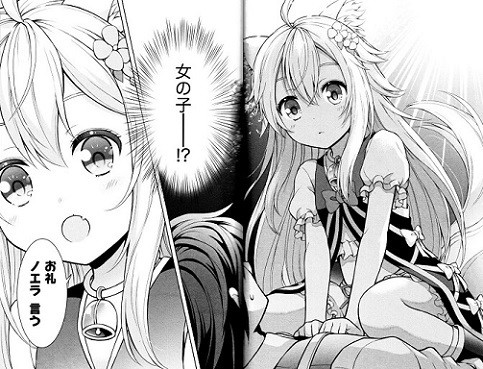"Yuru Camp△" isn't just about high school girls enjoying a heartwarming camping life; the story is also peppered with elements that even hardcore campers and riders can enjoy, such as internet slang, camper cliches, and detailed depictions of motorcycles. With so much charm in this series, today we'd like to take a closer look at what makes "Yuru Camp△" so interesting. At first glance, it may seem like it's just a bunch of cute characters having fun camping, but each and every episode contains a hidden message that the author wants to convey, so we'd like to start by explaining that.
Hidden Messages in Each Episode

At first glance, "Laid-Back Camp△" may seem like just a series of cute characters having fun, but the author's messages are woven into each and every episode. Among these, I'd like to explain the "Tombolo Phenomenon Episode," which has a particularly powerful message.
What is the Tombolo Phenomenon Episode?
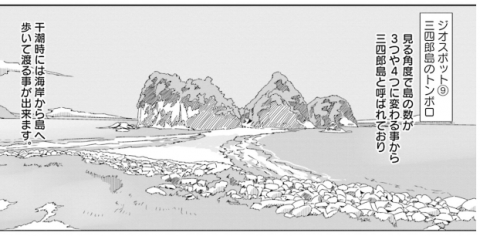
As part of a trip to Izu, an episode features a trip to Sanshiro Island. At low tide, it's possible to cross from the coast to Sanshiro Island. This phenomenon, where a path to the island is created by the ebb and flow of the tides, is called the tombolo phenomenon.
The ingenuity behind the tombolo phenomenon
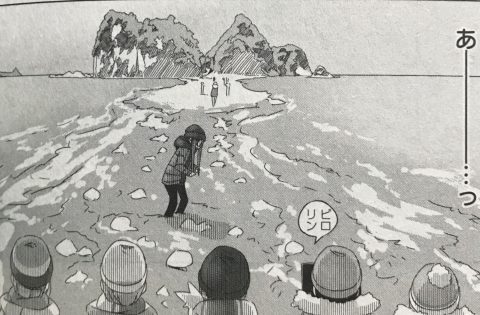
This might be a bit technical, but visually, crossing a river or ocean to reach another landmass is used to emphasize that the character who crossed is taking a completely different step than before, or that there is something different about them compared to characters who have not crossed. This method of expression has been used for a long time and is found in many works, but I believe that this technique is exactly what is used in the "Tombolo Phenomenon Episode" of "Yuru Camp△."
The Only Person Who Didn't Cross
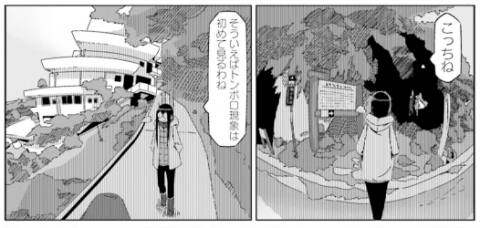
One of the reasons the visual element I mentioned earlier was used in the "Tombolo Phenomenon Episode" is that there was clearly a person who was intentionally prevented from crossing over to the island. That's Mr. Toba. Perhaps the author had some kind of message he wanted to convey, so he left Mr. Toba on the shore and had the students cross over to Sanshiro Island. Considering this, it makes sense why the author would go to the trouble of dedicating multiple frames to justifying Mr. Toba's lack of crossing over to the island because he's tired.
The key is Toba-sensei's "Wonder of Nature" comment
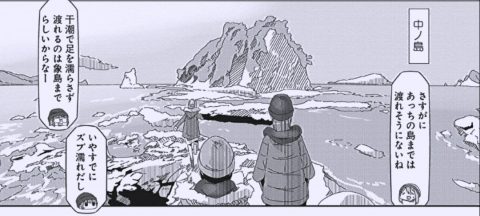
So, what exactly is the author trying to convey? This can be understood by analyzing Toba-sensei's monologue at the end of the "Tombolo Phenomenon" episode, where he gazes out at the island from the coast. "A wonder of nature, a path appears from the sea in an hour, and then disappears back into the sea an hour later..." This comment suggests that Toba-sensei believes the path to the island Nadeshiko and her friends crossed is finite, disappearing over time.
What does "finite" mean here?

Is the finite thing referred to here only the path to the island created by the tombolo phenomenon? Could it also refer to the youth that Nadeshiko and the others are currently enjoying? Could the reason Toba-sensei didn't cross over be because, like Nadeshiko and the others, he himself had enjoyed his limited youth in the past (i.e., he had already crossed over)? Of course, Toba-sensei didn't actually cross over to Sanshiro Island in the past, but the act of crossing over Sanshiro Island itself is a metaphor for enjoying one's limited youth.
And the meaning behind Toba-sensei's photographs becomes clear.

Considering these points, perhaps we can understand why Toba-sensei photographed Nadeshiko and the others returning from the island. Nadeshiko and the others were having fun on the island, so naturally they weren't thinking about leaving, and they certainly didn't feel like their youth was coming to an end. However, Toba-sensei was the only one who objectively observed them from afar, and he realized that they would eventually leave the island and come over here (ending their youth). Perhaps it was precisely because they were things that would eventually come to an end (a finite thing) that he wanted to capture them in a photograph.
The Theme: The Finiteness of Youth

From these points, it seems that the finiteness of youth is a central theme of "Yuru Camp△." The protagonists Nadeshiko and Rin, as well as the Outdoor Club members, are unaware of the finiteness of youth precisely because they are experiencing it in the present, as when they travel to the island. However, by touching on the "finiteness of things" in moments that strike a chord with the reader, such as when Ena contemplates Chikuwa's death or when she sees the students from Mr. Toba's perspective, perhaps the story is intended to make the reader realize that the youth they are experiencing now will also eventually come to an end.
Campfires and Youth

A campfire is beautiful because it goes out, and camping is fun because it ends so quickly. Perhaps youth is also irreplaceable because it ends so quickly.
Don't reject anyone

In the case of "Yuru Camp△," isn't it particularly emphasized as a message of "not rejecting anyone"?
An Interesting Theme Reversal

While there are many stories in which a protagonist who enjoys solitude becomes more sociable due to the influence of those around them, this is an interesting reversal in which an active protagonist becomes interested in solo camping due to the influence of another protagonist who also enjoys solitude.
Herein lies the secret to the fun of "Yuru Camp△"!!
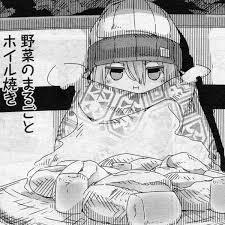
While many anime have been made that "affirm being alone," I think what's amazing about "Yuru Camp△" is how it manages to do this so well using the device of camping.
It's a natural fit for camping.
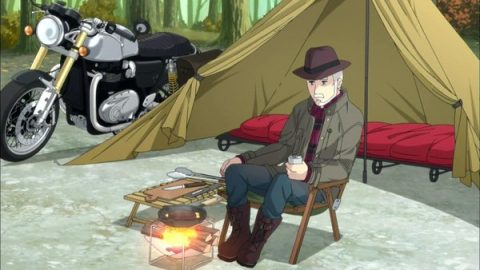
Solo camping is a genre that exists independently, and it's a well-established hobby where enjoying the experience of quietly reflecting on yourself while watching a campfire alone is a fun way to enjoy yourself. It's clear that the theme of "affirming solitude" and the subject of camping are a perfect match.
That's why otaku are so easily hooked on camping.

It's a bad habit, but we often find ourselves collecting light novels and plastic models in our rooms and retreating into our own world. These actions are similar to the solo camping mentioned earlier, so it's no wonder that "Laid-Back Camp△" became a hit anime and was embraced by so many otaku.
Core tidbits!!
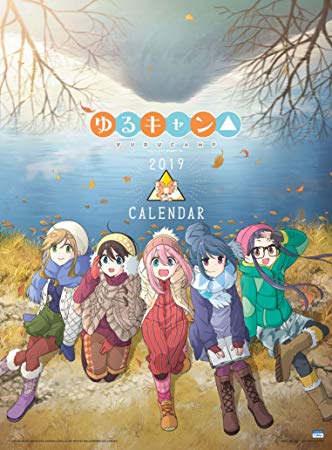
So far, we've delved a little deeper into the appeal of "Yuru Camp△," but there's much more to "Yuru Camp△" than that. One of those is the core gags, such as the sudden use of internet slang. Here, I'd like to explain some of the internet slang that appears in the series.
Kua w se drfgty fujiko lp

Rin immediately utters this internet slang in a chat with Ena at the beginning: "Kua w se drfgty fujiko lp." While it may not be clear at first glance, the original inspiration came from a discussion on a certain internet message board about how pressing the top two rows of a keyboard from left to right in one go would produce the word "Fujiko." This internet slang itself is quite core, so perhaps Rin is also using a certain internet message board.
It feels so good...
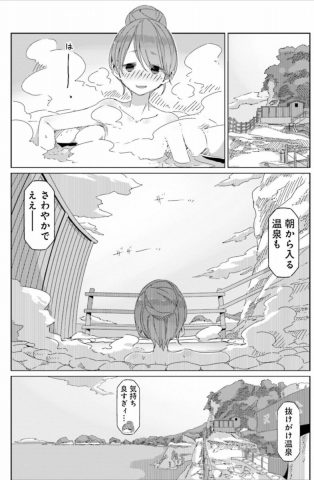
This is also an internet slang uttered by Rin. The phrase "~shisugi" (too much) is often used on a certain online message board. While I won't go into the origins of the phrase, it's also a commonly used expression online, showing how much Rin uses the internet. We often find ourselves using expressions we see online at random times in our daily lives.
The scenery descriptions are simply beautiful!!

And above all, what makes "Yuru Camp△" so great is its overwhelmingly excellent depictions of scenery. Numerous campsite geospots appear throughout the series, each depicted in meticulous detail, making you feel as if you're being drawn into the overwhelming worldview.
Introducing the detailed geospots!!

The precision of geospots in "Yuru Camp△" is particularly astounding, with many depictions so detailed that even geology nerds will be impressed.
It's like a photograph!? Wide-angle camera-like depiction!
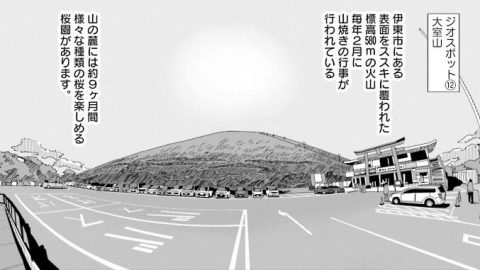
In recent years, wide-angle cameras have become increasingly common on smartphones, and they have become more widely known among the general public. Wide-angle cameras are used to capture landscapes in a more dynamic way. "Yuru Camp△" skillfully incorporates wide-angle camera footage into its landscape paintings to create more dynamic scenes.
It's not just about the scenery!!
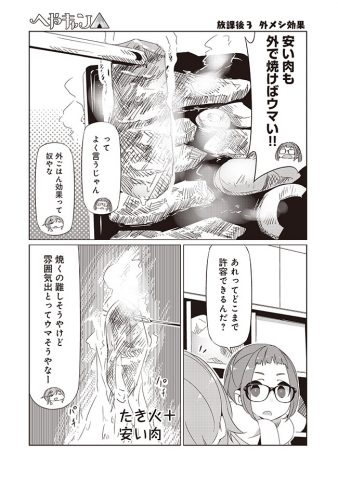
Of course, not only the scenery but also the depictions of fatty meat and vehicles are meticulously drawn.
Even the vehicles and equipment are well thought out!!

What's more, almost all of the vehicles and gadgets featured in the series are real, and any vehicles or gadgets that become interesting through "Yuru Camp△" can actually be purchased.
The Vino: A Perfect Match for Rin

The most memorable vehicle in this film is probably Rin's beloved Yamaha Vino. The bright color of the Vino adds a nice accent to the quiet young girl.
Vehicles that suit each character
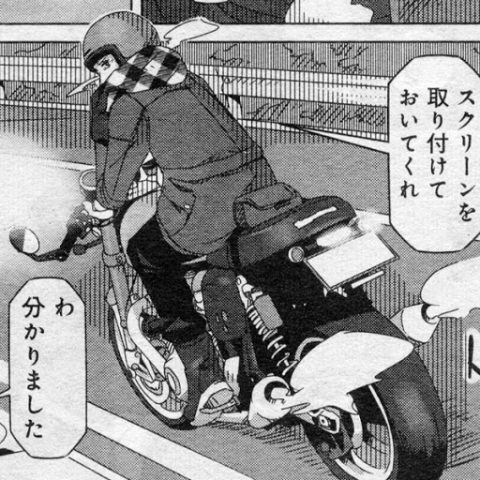
Not only Rin's Vino, but her grandfather also rides a Triumph Thruxton R, a motorcycle from the venerable British motorcycle manufacturer. Each character is assigned a vehicle that suits them, and you can really feel the thoughtfulness of the characters' personalities.
Ingenious Design for a Camping Manga

"Yuru Camp△" also incorporates numerous ingenious design elements to prevent the content from becoming flat, a weakness of so-called slice-of-life stories.
Rhythmic Occasions and Leveling Up
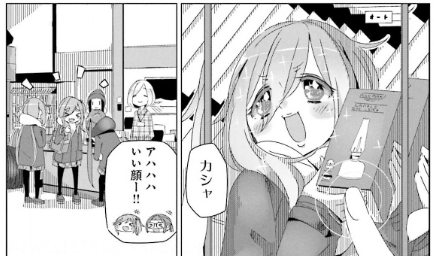
"Yuru Camp△" successfully avoids the staleness that is often plaguing slice-of-life anime by incorporating rhythmic quirks and leveling up each character's level by acquiring new tools and hobbies before the next camping trip.
Summary
What did you think? This series is entertaining enough even if you just watch it casually, but perhaps by analyzing it more deeply, you've discovered new charms you may not have noticed before. I believe there are many hidden messages and ingenuity in "Yuru Camp△" beyond the elements introduced here. I encourage you all to try searching for yourself; I'm sure you'll make lots of interesting discoveries.

